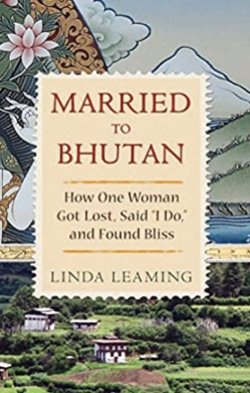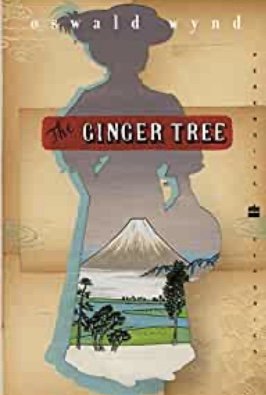What is an eighty-year-old man doing, riding horseback through Mongolia and staunchly ignoring his injured ankle as it turns amber and black? To complicate matters even more, this octagenarian is at the beginning of a journey to travel the length of a river that’s perhaps the eighth longest in the world--or maybe the tenth.
The Amur is probably the greatest river you’ve never heard of. With more than 200 tributaries, it flows for 2,826 miles, through Siberia, past China, and into the Pacific Ocean. It forms a 1000-mile border between Russia and China, “a fault-line shrouded in old mistrust.”
Colin Thubron is determined to follow the Amur River, from the source of its first tributary in Mongolia’s sacred and forbidden territory until it enters the Pacific. If anybody can accomplish this, it’s Thubron, a man who has spent his life traveling and writing, with a staggering total of eleven works of travel literature and eight novels. He’s known as a “gifted linguist,” a knowledge that gives a deeper dimension to his writing than that of many other travelers. While most travel writing is solipsistic because of the isolation that linguistic ignorance guarantees, Thubron enters fully into every region he visits.
In this journey he is instantly immersed in the “icy torrent of light” cast by the Milky Way upon the Mongolian grassland and “a tide of wildflowers” that surrounds him in daylight. In the company of three Mongolians and with the grudging permission of officials, Thubron sets off to find the Amur’s furthest tributary, the Onon, which springs from the sacred mountains that spawned Genghis Khan and may hold his burial ground. Even on horseback, this is an arduous journey, through the evergreen forests of the taiga and the bogs that border them, with mudholes that can easily engulf a horse--and does. Thubron’s mount sinks and rolls, its weight trapping him and injuring his ribs. With pain alternating between ankle and ribcage, Thubron continues. After reaching “a trickle of water,” the beginning of the Onon, he and his companions follow it back to the grasslands, a three-hundred-mile start of a much longer adventure.
Traveling by jeep, Thubron travels through blood-soaked country, where the Baryat Mongols from Siberia were imprisoned and killed by the Soviet government in the 30’s, their history still living in the stories of survivors, “the direct memory people.” Thubron himself revives the memory of the Xiongnu people who once threatened China as he drives through the region where their burial grounds live. “Horses haunt these graves,” he says, the skeletons of those who were sacrificed within the tombs, their harnesses, the jars filled with theirr bones.
Thubron follows the Onan into Russia, where it becomes the Shilka River on one bank and the Heilongjiang on its opposite side. It’s a border between Russia and China that at times is less than half a mile in width, where the glittering modernity of a Chinese city faces a haphazardly preserved past in a Russian town. Russian markets are filled with Chinese goods, transported across the river by Russian laborers, “camels.” their Chinese employers call them. China is feared and hated, even by the Russians who profit from doing business with them. Rumors persist that the Chinese are everywhere, planning to make Siberia their next province.
Following Chekhov on that writer’s journey down the Amur which claimed Anton’s “unsentimental heart” with its “million gorgeous landscapes,” Thubron is stopped by police in an encounter that threatens to derail his journey, a disaster that is avoided for reasons he never understands. He moves through the history of slaughtered tribal people and massacred Chinese, of Pu Yi, the last emperor, held briefly in Siberia where his servants still brushed his teeth and tied his shoes, and traces of Manchu heritage in a Chinese village where he hears one of the last surviving speakers of Manchu speak a language that is known by no more than twenty people nationwide.
Because the region’s savage winters make river travel impossible, Thubron postpones the final leg of his journey until the following spring. Six months later he returns, his body healed of what British doctors diagnosed as two fractured ribs and a broken fibula in his ankle. He moves north, into the land of indigenous people who live among bears and birch forests. Rumors claim they worship bears and their myths are filled with stories of women who bore children fathered by a bear. With Russian guides, he embarks on a fishing trip into the wilderness where bears are commonplace and rumors consist of the return of tigers.
Thubron’s companions ignore the truth that they’re fishing out of season and so do the local police, who give them tips on where the best fish can be caught. They catch and feast upon a six-foot Amur sturgeon, a species that’s been off-limits for thirty years. When the police see what they bagged, they laugh and move on. Later when Thubron and his companions find an eight-foot Kaluga sturgeon who has had her caviar gouged from her body, even the poachers are disgusted.
When he reaches his final destination, it’s a town with streets “barely woken after winter,” a place with a “louring past” of battles and massacres, one that was destroyed by fire and “grew piecemeal from the ashes.” The mouth of the Amur “yawns three miles wide” before it spills into the ocean and Thubron ends his account abruptly, as if he hated to have reached the end.
Even this man, who has turned his travels into an art form that brings the places he goes, the people he meets, the history he encounters, vividly and thoughtfully alive in his books, has occasional qualms that every traveler has known: “Then I feel how liitle I understand where I am, and travel seems an exercise in failure.”
This is a temporary slump. Thubron emerges to relish the sight of “ a thick, unending parapet of trees,” conversations with a man who venerates Cossacks and their never-ending spree of blood, with a woman whose grandmother was one of the last shaman, with people who live off the barren land of Siberia, and stories of a bear festival that once persisted, drenched in brutality. This is the traveler we all wish to be, futilely. There is only one Colin Thubron, moving onward into his eighties, redefining what age can mean to those who have the courage to ignore it.~Janet Brown



















